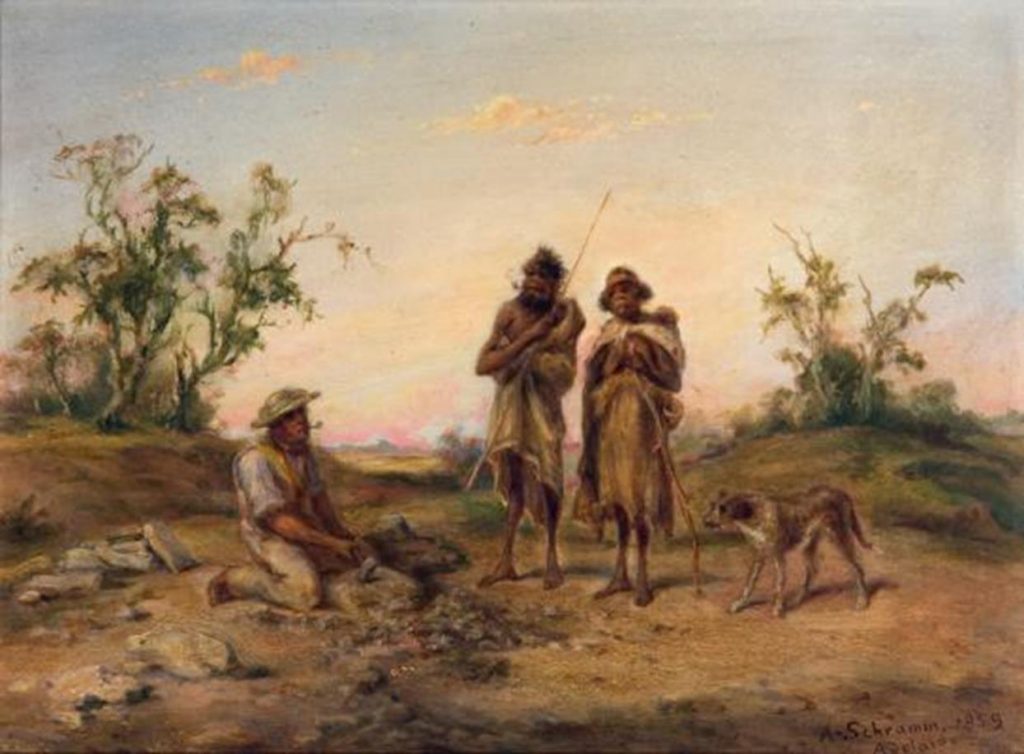There are two particular aspects of Australian art – the aboriginal art and the art of the first settlers who depicted the locals as they saw them. The art of the latter is usually superficial and fails to present the aborigines as human beings but reduces them to savages guided by animal instincts. Civilization vs. Nature by Alexander Schramm, painted in 1859, and A Scene in South Australia by Alexander Schramm, painted in 1850, evidence of this sad tendency.


In the first picture, two aborigines in palm leaf skirts are depicted near a decent white working man, presumably a geologist, who wears a straw hat, casual vest and pants, and a white shirt. The ‘geologist’ is smoking the pipe, which also demonstrates his civilization. The natives, on the other hand, brought a dog with them, which clearly indicates their closeness to nature. In the second image, a large group of Aboriginal people came to the village of white people to know each other. The scene involves women and children, which creates a more peaceful atmosphere, but one of the older children points the finger at the guests, and an English bulldog shows teeth to the local dogs. One of the aboriginal women is fully clothed and sitting by the fire; white people are also dressed in traditional English clothes and shoes. Most of the aboriginal people are barefoot and lack some clothing elements.
The artist’s excessive attention to the listed details demonstrates a lack of interest in the aborigines and their culture. The artist clearly emphasizes the superiority of white people who know how to use tools, as in the first painting, or have a home, in contrast to the locals as in the second painting. Since the artists were representatives of their culture, their vision testifies to the British’s arrogance towards the local population, the lack of desire for equal interaction, and the representation of the aborigines in the mass consciousness as savages, leveling their human qualities.
The purpose of each painting was probably to reduce the mistrust of the white settlers towards the natives, demonstrating that they are peaceful people who do not wish anyone evil. Such a conclusion can be drawn by looking at the first picture, where two Aboriginal people do not intend to use violence against a lonely white man. The second picture presents the same idea, as a single English woman with small children does not show fear or apprehension about the whole tribe of Aboriginal people who came to the courtyard of her house to exchange goods or get acquainted.
